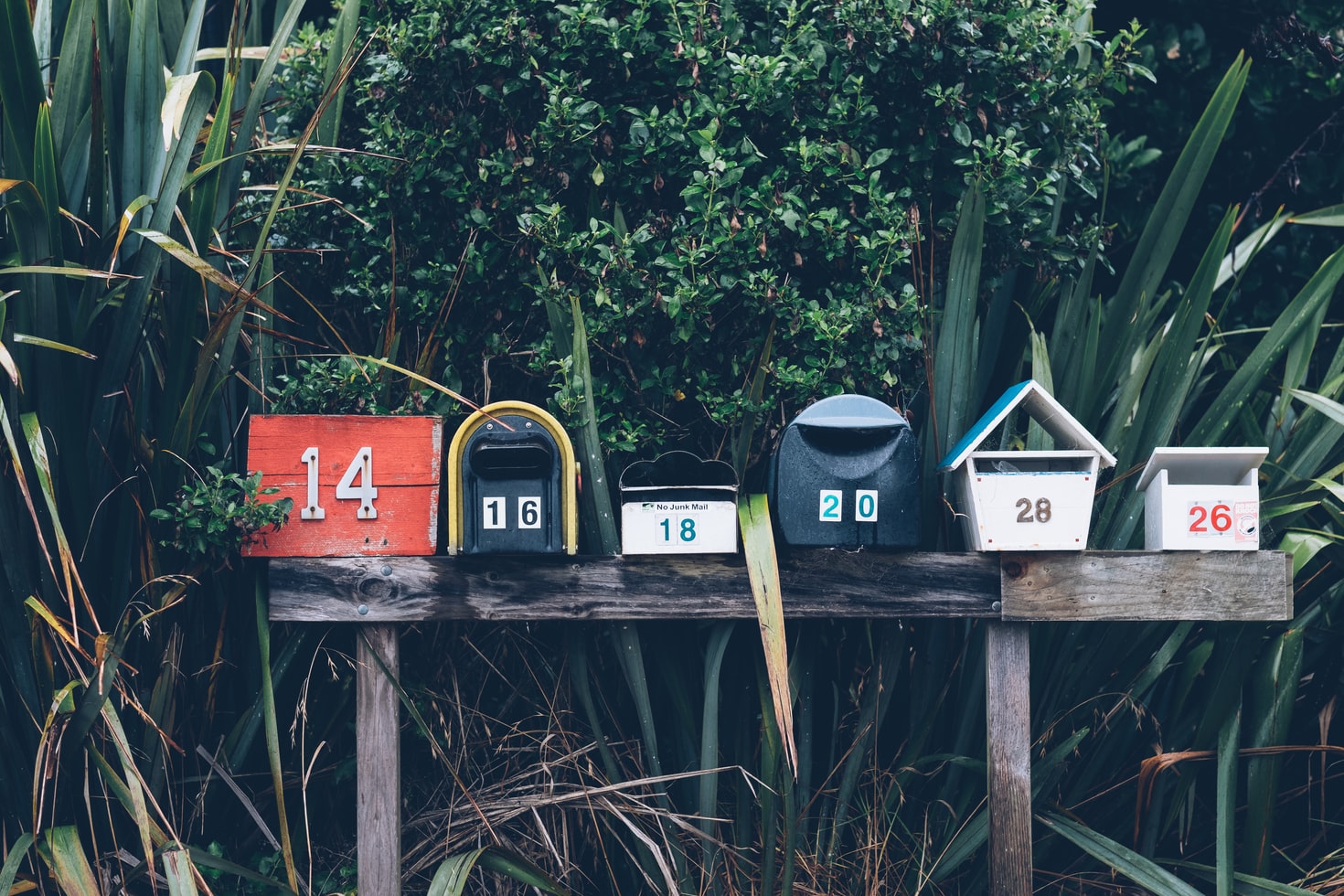If the title of her newsletter, “Total Annarchy,” is any indication, Ann Handley thinks differently about newsletter strategy than most.
A best-selling author, speaker, chief content officer, and one of Forbes’ “20 Best Marketing and Social Media Women Bloggers,” Handley’s fresh approach to content has built her career as well as her impressive newsletter list.
Handley’s newsletter is known for its story-based insights, joyful tone, and actionable advice. It dances to the beat of its own drum while providing real value to its readers. Marketers and non-marketers alike rave about it. So how does this magic happen? We sat down with Handley to find out just that.
1. She wrote what she wanted to read
Handley says she started her newsletter as a response to wishing she had something like it herself: a marketing newsletter about writing that she actually wanted to read and wasn’t dry or boring. “The biggest trigger to growth is happiness, joy all around,” says Handley. “No good writing is created at gunpoint.”
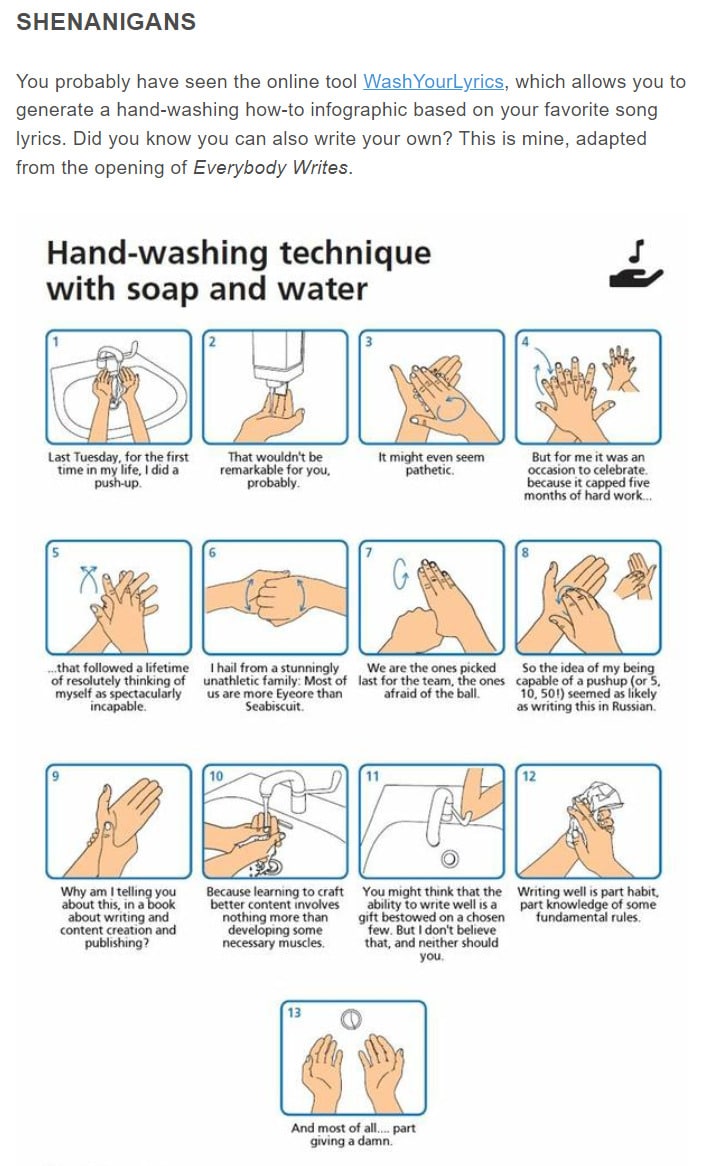
Ann includes a section called “Shenanigans” in every newsletter that includes (often random) things that she has found interesting or amusing. It doesn’t follow a “best practices” template or anything stuffy, it’s just there because she enjoys it. Source.
How does Handley measure this? She tries to make herself laugh every time she writes an issue of her newsletter. Now that is a KPI we can get on board with. “If I hated writing [something],” says Handley, “you’d feel that.”
“The biggest trigger to growth is happiness, joy all around. No good writing is created at gunpoint.”
– Ann Handley
2. She defined her niche and stuck to it
Defining your niche not only helps you narrow down what to write about but also helps your audience know what to expect, Handley says. “I make sure new subscribers know exactly what they’ll get. Pro-tip for marketing (and Life): Setting expectations neuters rage.”
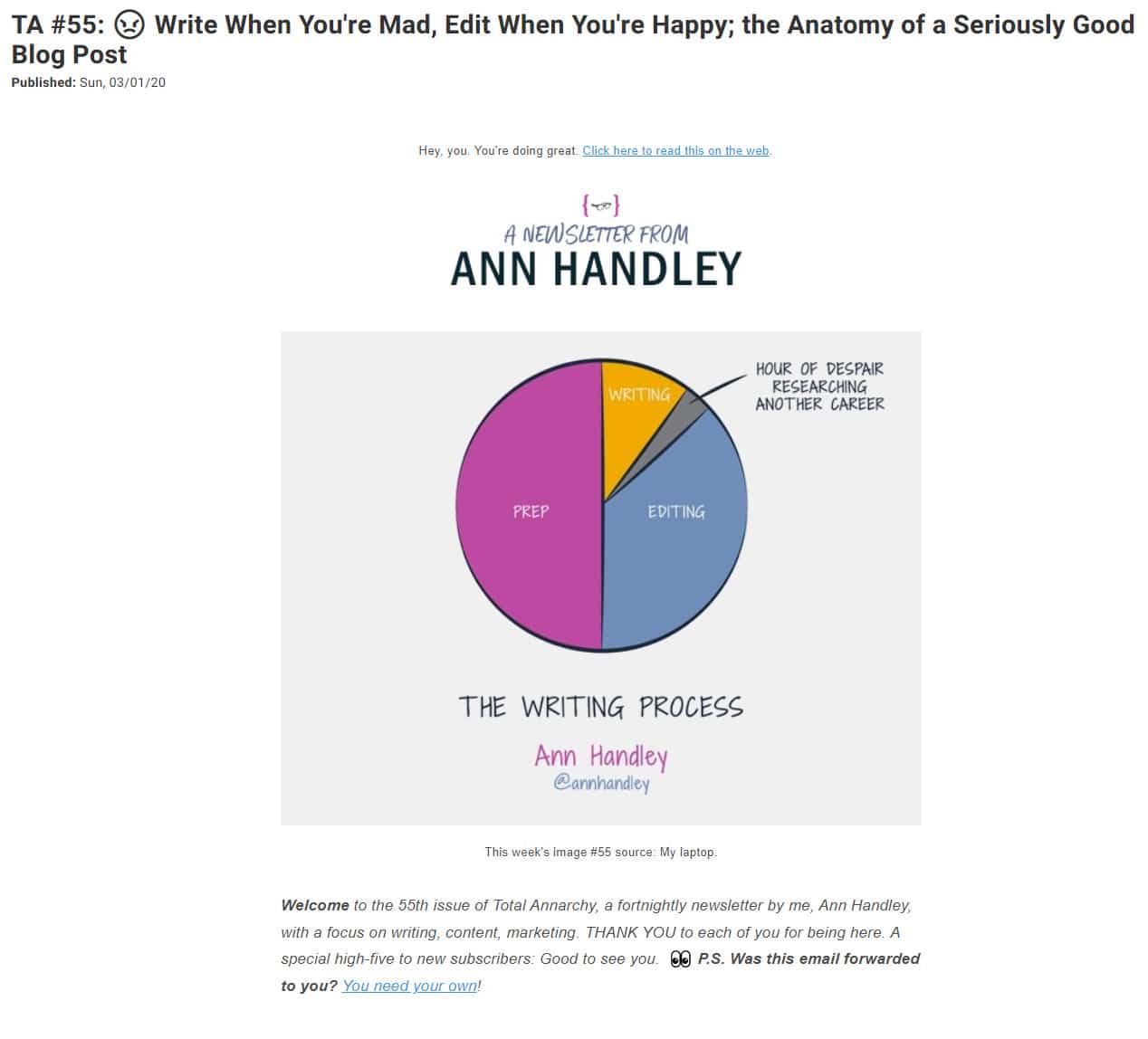
Handley lets her readers know exactly what her newsletter is about right from the start. Handley’s subject lines and graphics illustrate clearly that this newsletter is about writing. Source.
3. She built relationships, not just a list
Handley said she initially implemented a pop-up window to garner subscribers, like many newsletters. However, she soon took it down. Why? “I want a reader’s relationship with me to be, ultimately, the trigger that would grow the list,” says Handley. “It was a revelation to me. And it’s important.”
When you build relationships with readers, you build trust and affinity, which leads to long-term success. If readers don’t feel connected, chances are their interest in your newsletter will wane. And a bonus is that you’ll get inspiration and feedback right from the source.
When writing her newsletter, Handley imagines a single subscriber and writes as if to them, specifically. “Put a pillow over the face of anything with a whiff of ‘Dear Valued Customers,’” says Handley. “Use ‘You’ like you picked up a lifetime supply at a BOGO sale.”
“I want a reader’s relationship with me to be, ultimately, the trigger that would grow the list.”
– Ann Handley
Handley also notes that connecting with subscribers is only a single part of building relationships. Building relationships with other influencers has also been an integral part of growing her list. “Call out the good work of others,” says Handley. “Share the love. Don’t expect and ask for reciprocity—that’s not friendship, that’s coercion.”
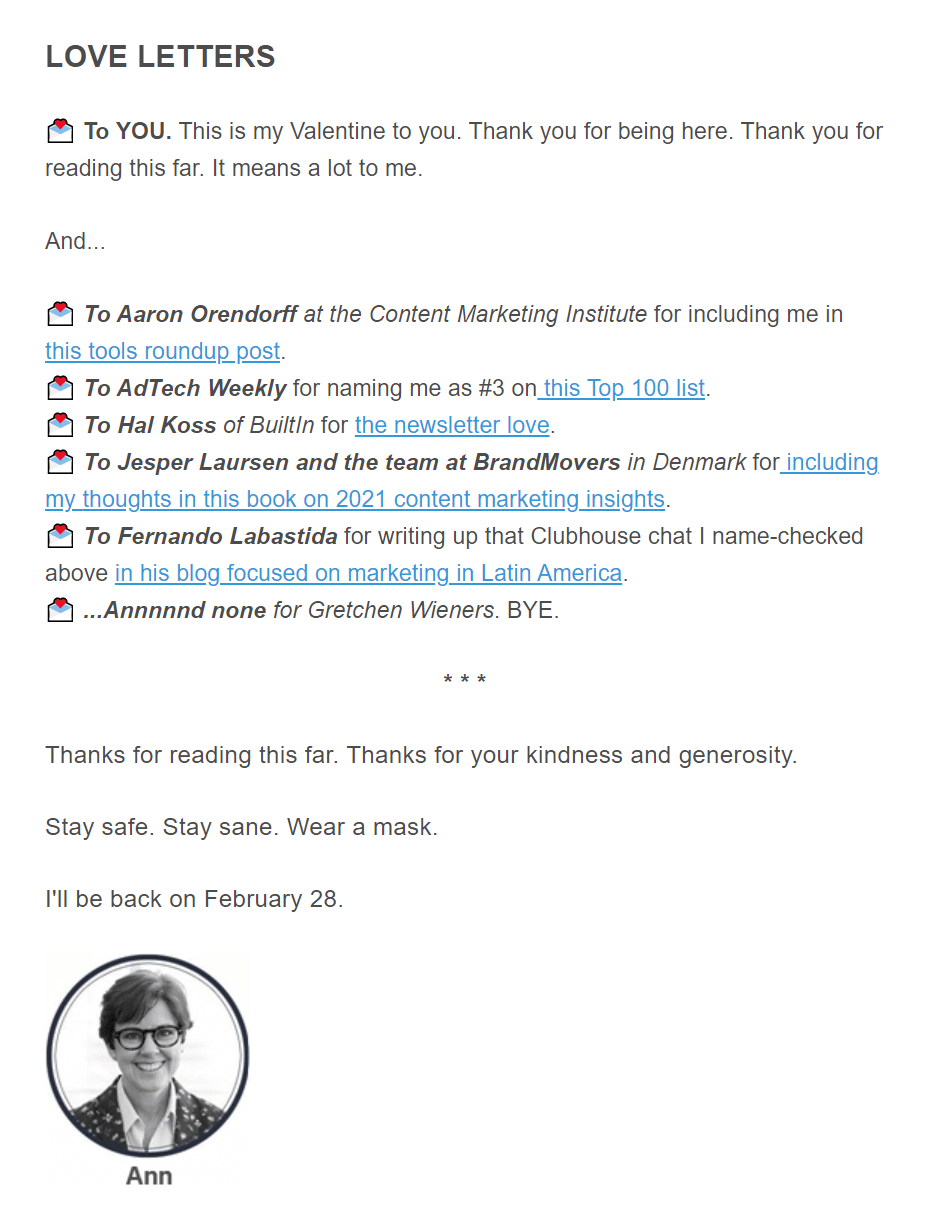
At the end of every newsletter, Handley includes “love letters” to people supporting her work. Source.
4. She surprised her readers
Many of Handley’s best-performing emails have been the ones that are unique in some way. Or, as Handley likes to say, “Not business as usual.” Handley accomplishes this by using paradoxes or contrarian ideas that pique the reader’s interest.

Is this email newsletter from Starbucks? No, this is an Ann Handley special. Source.
For example, her newsletter that garnered the most subscriber referrals was titled “Pumpkin Spice Newsletter: A Case Study in the Power of Copywriting.” Readers may have expected this from Starbucks but not a marketing newsletter. Or her newsletter that was the strongest performer across all metrics: “TikTok with the Best Writing Advice (No Really).” It’s surprising because most people wouldn’t think of TikTok as a source of great writing advice.
5. She kept it current
Keep a pulse on what’s happening in the world and tie your content to it. When your newsletter speaks to the current zeitgeist, readers engage because you’re speaking to what’s already on their minds. For example, Handley’s newsletter with the most opens was “Your Hand Sanitizer for Bad Marketing” because it tapped into a shared experience happening at that time during the Covid-19 pandemic.

Handley uses current events to inspire many of her subject lines, drawing her readers in. Source.
6. She gave her copy breathing room
Handley may write longer newsletters than some would recommend, but the reason it holds water is it’s not a rambling, meaningless tangle of copy. “White space is oxygen,” says Handley. “Use it. Let your words breathe. I love long sentences. But newsletters need short sentences. Short paragraphs. Short sections. Don’t make 1,000 words feel like 1,000 words.”
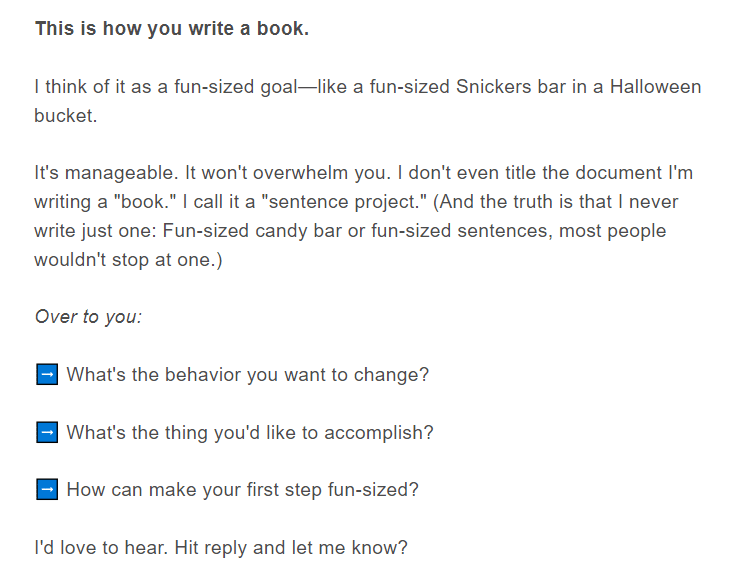
Handley highlights the main talking points in her newsletter with easily skimmable bullets and a lot of white space between paragraphs. Source.
Short, purposeful sentences, paragraphs, and sections break up the visual density of longer newsletters. White space allows the reader to easily skim the content and identify key thoughts.
7. She took her time
We’ve all been there, staring blankly at an empty page, waiting for genius to strike. The reality is great newsletters take time. When it comes to newsletter writing, don’t expect to get it right on the first pass. Handley says writing her newsletter takes her 8 hours over 4 drafts and 2-3 days, on average. “Slow down. Invest where it matters,” says Handley. “I want to make each paragraph, sentence, word earn its keep.”
“I want to make each paragraph, sentence, word earn its keep.”
– Ann Handley
Handley says many of her ideas come from a journal where she jots down stories she hears. She also recommends plugging your piece into an AI editing tool like Grammarly, making simple changes, and then handing it off to a [human] editor who “gets you.”
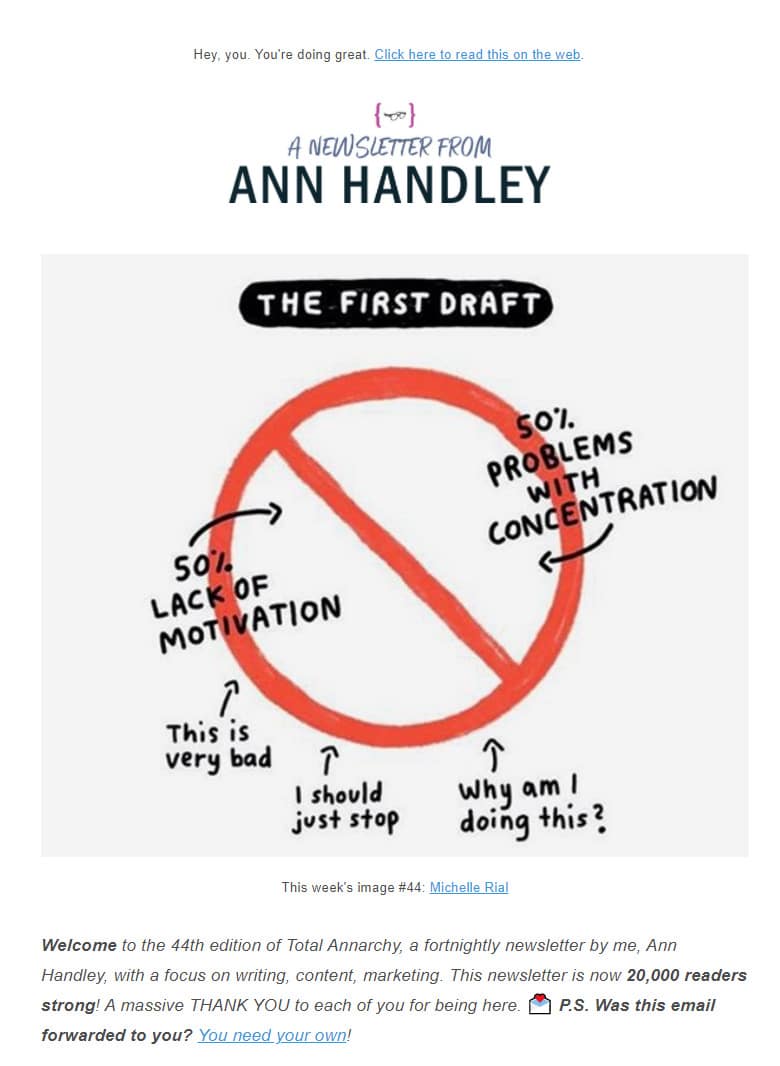
Handley not only takes her time writing but is transparent with her readers about her process – the good, the bad, and the ugly. Source.
8. She promoted value rather than an event
Handley encourages marketers to share the value of what they’re writing rather than just the summary of it, whether that’s a subject line or a social media promotion. Focus on an action you took to achieve a specific goal or an action the reader can take to achieve a goal. Make it clear what they’ll get by engaging with your content.
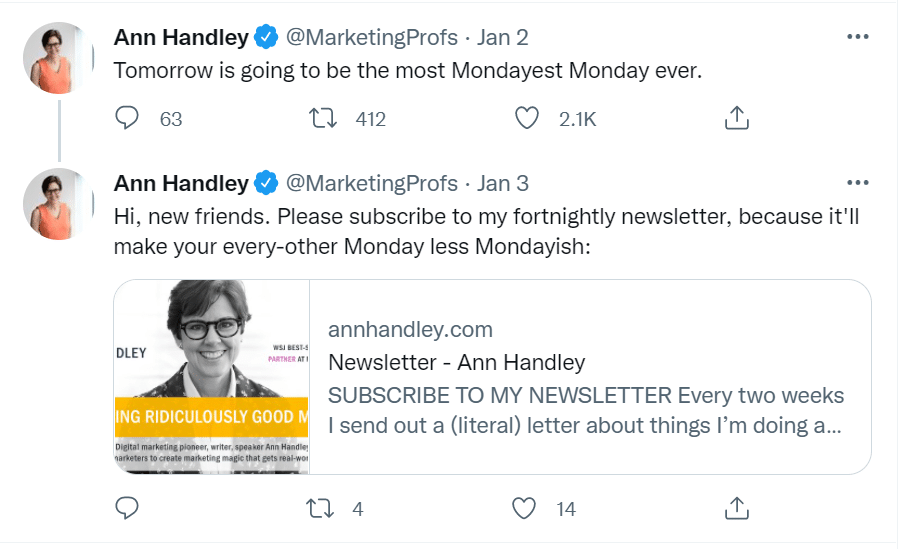
When promoting her newsletter on Twitter, Handley illustrates the value of her newsletter in a relatable way before sharing the link. Source.
For example, “Don’t write, ‘The latest issue of my newsletter just dropped’ with a link to it — who cares?” says Handley. “Share the value, not the event. Instead write, ‘How I learned to avoid writing by committee.’”
9. She measured outcomes, not just the size
“Purpose defines goals,” says Handley. “My purpose is to nurture and have fun. That keeps me focused on what matters, which is probably different than what most newsletters look at.” Handley says she doesn’t look at click-through rates like many other newsletter writers but rather a metric she made up for herself: Open-to-Write-Back-Rate (OWBR). That is, for every email sent, how many readers personally respond?
“Purpose defines goals. My purpose is to nurture and have fun. That keeps me focused on what matters, which is probably different than what most newsletters look at.”
– Ann Handley
While the metric for your newsletter may be different than OWBR, the key is to look at the metrics that measure key outcomes rather than the mere size of your list. “Size is a byproduct, not a goal,” Handley says.
Create your own Annarchy
It’s easy to want to copy and paste someone else’s approach to success and feel married to it. However, if there’s one thing to learn from Handley, it’s to make your newsletter your own. What are you passionate about? What do you wish existed in the world? Take each of these suggestions and tailor it to your style and audience. Are you ready to get started building your own unique newsletter? Check out our free newsletter templates now.
